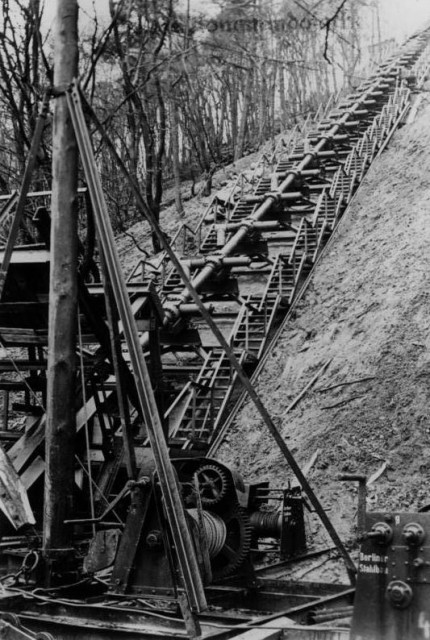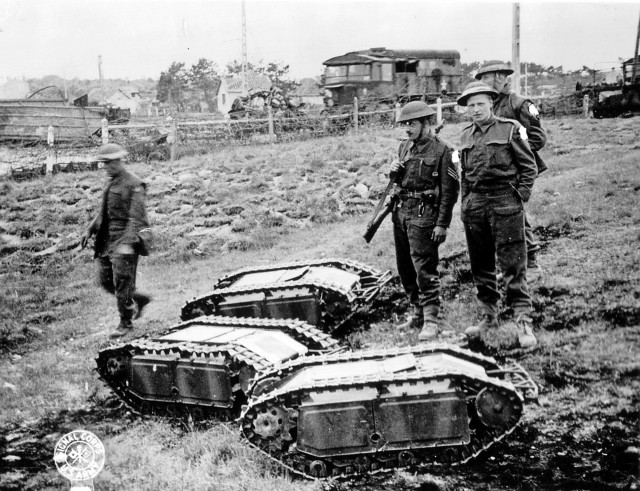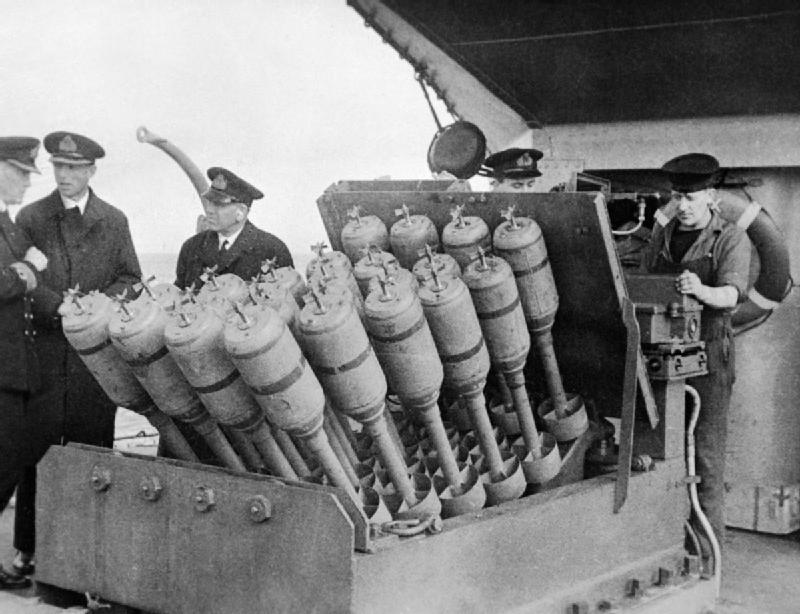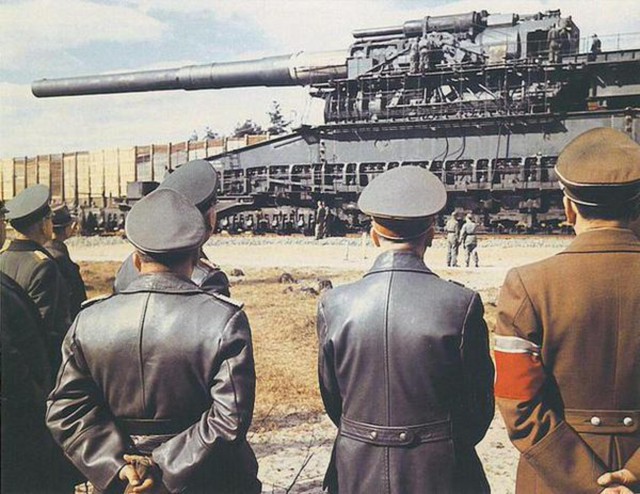World War Two saw massive leaps in technology as the countries involved wanted to advance their military capabilities, medical support and communications over their enemies.
Some of those bizarre advancements have helped to shape modern technology today, some failed completely.
1. Ship-Mounted Rocket Powered Airplane Killer
The unrotated projectile, or UP, was a short-range rocket-firing anti-aircraft weapon developed for the Royal Navy to supplement the 2 pounder pom-pom gun due to a lack of close-range anti-aircraft weapons. It was used extensively by British ships during the early days of World War II. The UP was also used in ground-based single and 128-round launchers known as “Z batteries”.
The name “unrotated projectile” comes from the fact that the projectile was not spin-stabilized. The weapon had 20 smoothbore tubes, fired ten at a time. A small cordite charge was used to ignite a rocket motor which propelled the fin-stabilized 7-inch (18 cm) diameter rocket out of the tube to a distance of about 1,000 feet (300 m), where it exploded and released an 8.4 ounces (240 g) mine attached to three parachutes by 400 feet (120 m) of wire. The idea was that an airplane hitting the wire would draw the mine towards itself where it would detonate.
It wasn’t that successful since it was extremely visible in the air and could be easily avoided by enemy aircraft.
2. Anti-Tank Dogs

Anti-tank dogs were dogs taught to carry explosives to tanks, armored vehicles and other military targets. They were intensively trained by the Soviet and Russian military forces between 1930 and 1996 and used in 1941–1942 against German tanks in World War II. Although the original dog training routine was to leave the bomb and retreat so that the bomb would be detonated by the timer, this routine failed and was replaced by an impact detonation procedure which killed the dog in the process. The U.S. military trained anti-tank dogs in 1943 for use against fortifications, but never deployed them.
Dogs strapped with explosives were unsuccessfully used by Iraqi insurgents in the 2000s.
3. Gustav Gun
Schwerer Gustav (English: Heavy Gustaf or Great Gustaf) was the name of a German 80 cm railway gun. It was developed in the late 1930s by Krupp as siege artillery for the explicit purpose of destroying the main forts of the French Maginot Line, the strongest fortifications then in existence. The fully assembled gun weighed nearly 1,350 tonnes, and could fire shells weighing seven tonnes to a range of 47 kilometres (29 mi). The gun was designed in preparation for the Battle of France, but was not ready for action when the battle began, and in any case the Wehrmacht’s Blitzkrieg offensive through Belgium rapidly outflanked and isolated the Maginot Line’s World War I-era static defenses, forcing them to surrender uneventfully and making their destruction unnecessary.
Gustav was later employed in the Soviet Union at the siege of Sevastopol during Operation Barbarossa, where among other things, it destroyed a munitions depot buried in the bedrock under a bay. The gun was moved to Leningrad, and may have been intended to be used in the Warsaw Uprising like other German heavy siege pieces, but the rebellion was crushed before it could be prepared to fire. Gustav was destroyed near the end of the war in 1945 to avoid capture by the Red Army.
It was the largest-calibre rifled weapon ever used in combat, the heaviest mobile artillery piece ever built in terms of overall weight, and fired the heaviest shells of any artillery piece. It is only surpassed in calibre by the British Mallet’s Mortar and the American Little David mortar (both 36 inch; 914 mm)
It was eventually destroyed by Allied bomber pilots who targeted it whilst it was being transported via train.
4. The V-3 Super Gun

Another gun devised by the Nazis was the V-3 cannon. The V3 was the next generation of V1 and V2 bombs which hit Britain in 1944. Three years later the V3 could emit hundreds of shells that could travel huge distances of 100 miles or more. Once in operation, however, the speed of the shells meant that they couldn’t travel the distance.
Again Allied bombers had attacked and destroyed the gun and factories that were manufacturing it before it could be put to use. Only a scaled down version of the V-3 ever saw service, it fired shells on Luxembourg city during the Battle of the Bulge
5. Remote Control Explosive Mini Tanks

It was a German-engineered explosive carrier demolition vehicle and is also known as ‘beetle tank’. The allies dubbed it ‘doodlebugs’. 7,564 of these devices were produced by the Germans. It was capable of carrying 60-100 kg (132-220 lb) of explosives to targets, which were typically tanks, dense infantry, bridges and buildings. Goliaths were considered unsuccessful due low speed of just 6 mph or 9.7 kmph, vulnerable command cables, high unit cost and thin 10mm armor that was easily pierced by any type of anti tank device causing detonation of the explosives inside.
However, Goliath was a pioneer in advancement of post war technologies related to remote-controlled vehicles.

